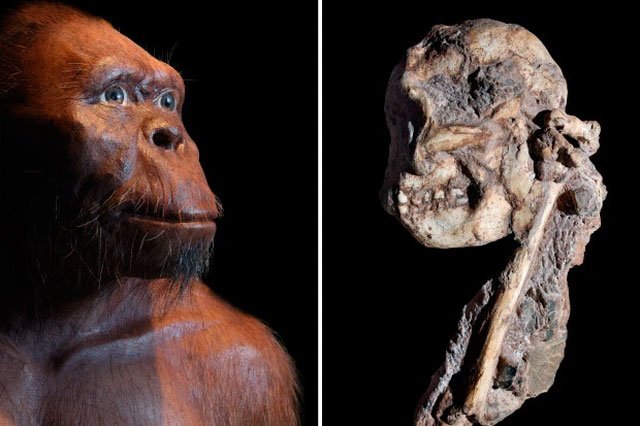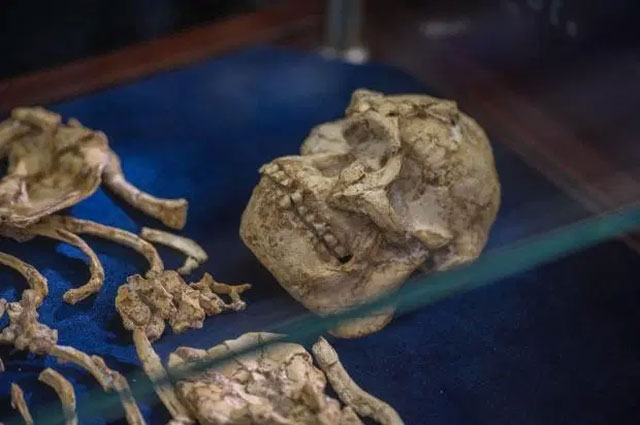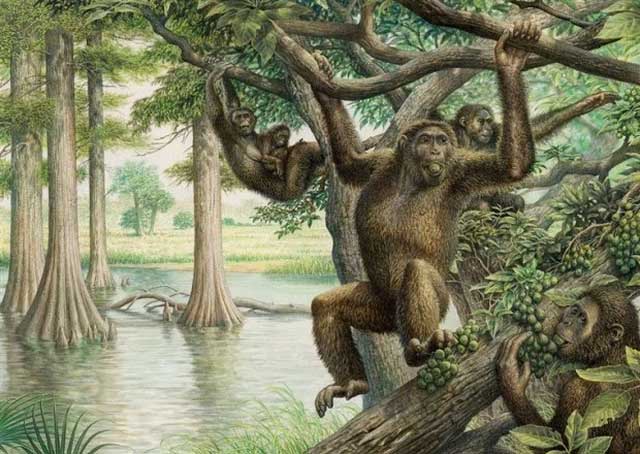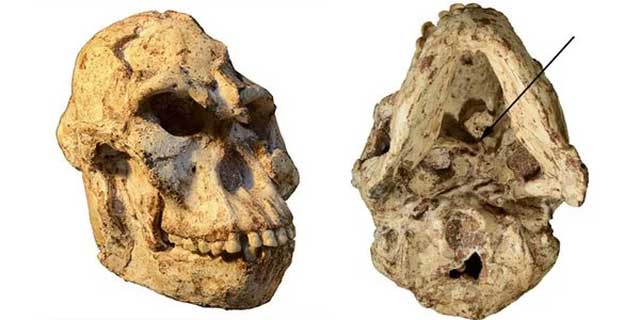Early humans also fasted and swung among the trees
Millions of years ago, the early humans had small brains, throwing themselves from tree to tree like monkeys and ate only plant foods.

3.6 million years ago, the early "Small Legs" (the left is the model; the right is the skull) swings people from tree to tree.
Scientists in South Africa discovered this after a CT scan of an ancient fossil skeleton called "Small Legs."
This set of bones is from the Southern ape hominid that lived about 3.67 million years ago. This is the most complete skeleton among the skeletons collected so far.
Experts compared this famous fossil with other fossil samples in Africa, and with modern human bones and today's chimpanzees.
The results suggest that our ancestors had a different head motion from modern humans.

The scientists took CT scans of an almost complete skeleton of the ape, Phuong Nam, our ancestor.

It is thought that Little Foot, originally a 20-year-old woman, died from a fall.
The shape of the vertebrae identifies the movements of the head and the size of the arteries passing through the vertebra to the skull indicates the flow of blood to the brain.
The general dimensions and shape of Smallfoot's vertebra are similar to that of chimpanzees.
From this fossil, the team determined that the ligament and joint head to neck suggest that the ancients often swung from tree to tree.
The Little Foot fossil is very well preserved, so this is also the first time researchers have determined blood flow to the brain. They identified Little Foot's blood flow to be three times less than today's modern people, and also roughly equal the chimpanzee's blood flow.

We have known for a long time that ancient apes, such as the Rudapithecus (pictured), have been able to move people from tree to tree for millions of years.

The Small Skull's skull shows that the brain is 3 times smaller than that of modern humans.
That means it is very likely that the Southern chimpanzee has a relatively small brain and eats very low quality food, including very little meat.
Lead researcher, Dr. Amelie Beaudet of Witwatersand University in Johannesburg, South Africa, said that the morphology of the first ancient vertebrae, or team vertebrae, reflects many of the living characteristics of an organism. In particular, the nearly intact team vertebrae of Little Leg can give a lot of information about the evolution of head movement and blood supply to the brain in the human race.
This research has been published in the journal Science Report.
See the most intact skeleton of human ancestors
November 24, 1974 - Southern anthropoid Lucy discovered in Ethiopia
- Unexpected facts about dolphins that few people know
- Climate change changes the pH of the ocean, returning to what it was 14 million years ago
- Decipher the mystery: An extremely ugly, scary monster is called a "living fossil"
- Discover the secret about the octopus - The "monster" of the sea
- Spectacular surreal scenes "dolphins glow" under the sea
FIDITOUR TRAVEL COMMUNICATION COMPANY
Representative: Mr. Tran Van Long - Chairman and General Director
Head office: 95B-97-99 Tran Hung Dao, District 1, City. Ho Chi Minh.
Hanoi Branch: 66 Tran Hung Dao, Hoan Kiem District, Hanoi
Phone: 028 730 56789 | Hotline: 19001177